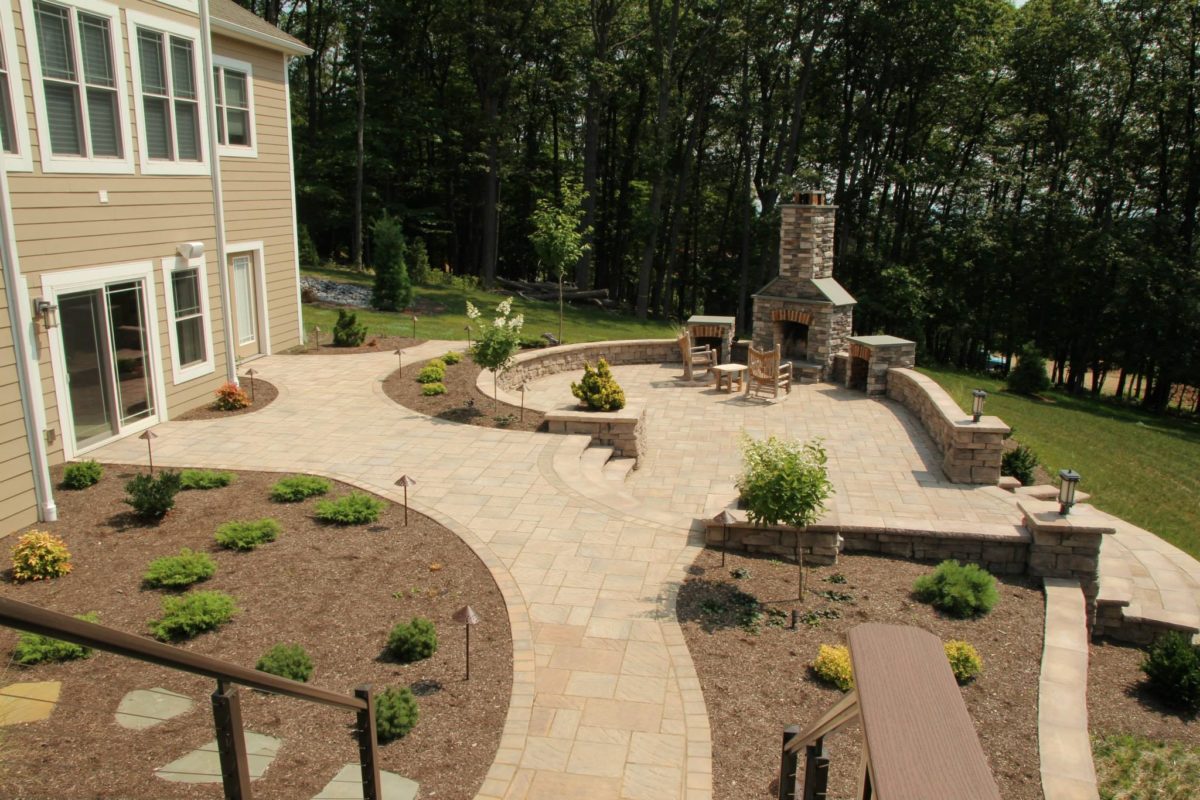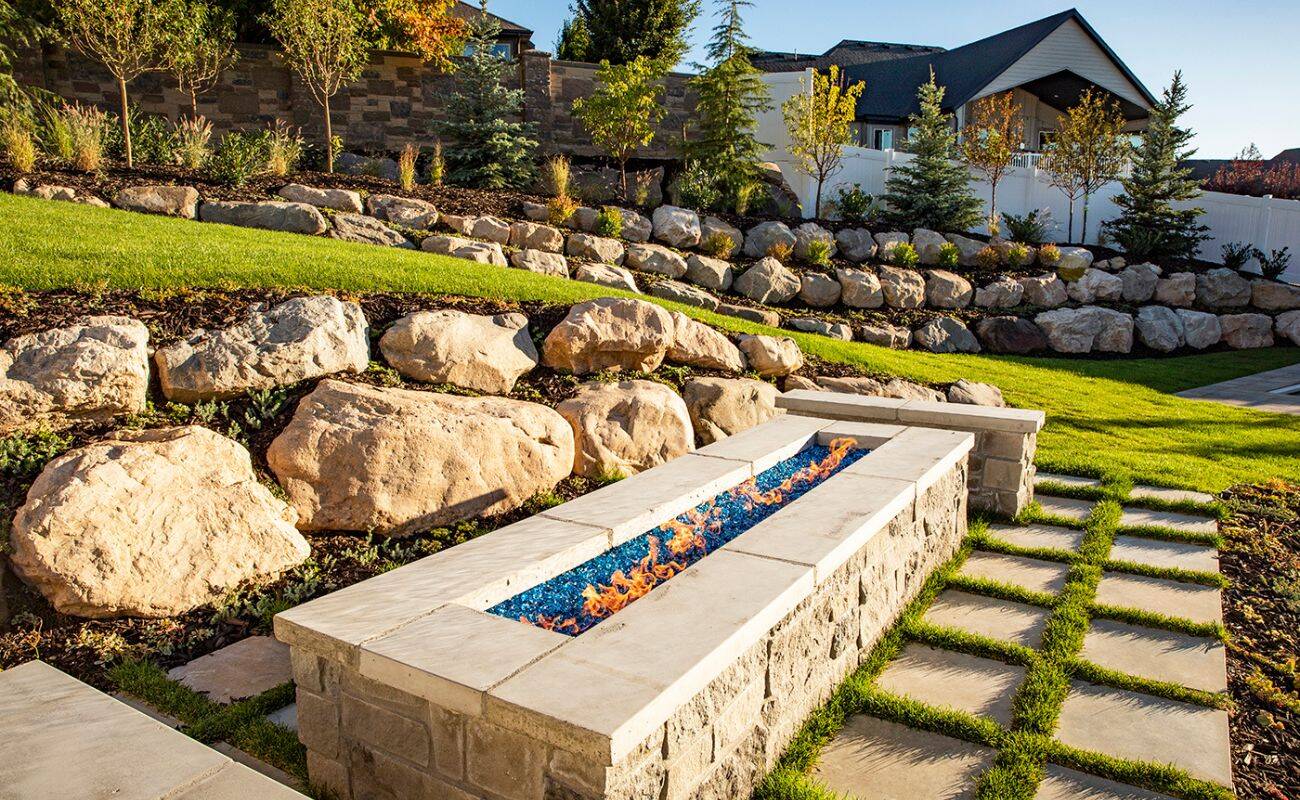Integrating hardscaping with natural landscapes requires balancing structural design with ecological harmony. Property owners often want outdoor spaces that look beautiful, function well, and age gracefully. With the help of professional hardscaping service, property owners can achieve outdoor spaces that look beautiful, function well, and age gracefully. This guide explains how stonework, pathways, patios, retaining walls, and other hardscape features can be combined with plants, soil, and water systems in ways that respect both design principles and the surrounding environment.
Planning Hardscapes Around Natural Features
Hardscape projects that last and look cohesive begin with a deep understanding of the site’s existing natural conditions. This step ensures the design respects landforms, soil structure, and vegetation patterns.
Reading the Land Before Design
Every property has unique contours, drainage lines, and light conditions. Studying slope, soil composition, and shade patterns helps determine the best placement for patios, walls, or water features. Ignoring these factors often leads to erosion, flooding, or plant failure.
Respecting Existing Vegetation
Mature trees and native shrubs anchor a landscape visually and ecologically. Instead of removing them, hard-scape elements can be curved or stepped around trunks, creating a design that looks more natural and less imposed.
Integrating Drainage with Design
Drainage systems such as French drains or permeable pavers can be incorporated seamlessly. Choosing porous surfaces allows water to filter into the soil, preventing runoff while keeping the aesthetic intact.
Choosing Materials That Blend with Nature
Material selection influences whether a hardscape feels cohesive or artificial. Natural integration relies on textures, tones, and durability that complement surrounding elements.
Local Stone and Regional Consistency
Using stone or gravel sourced from the same region creates a more seamless connection between built features and the environment. The colors and mineral compositions naturally align with the soil and rock formations already present.
Sustainable Material Options
Reclaimed brick, permeable concrete, or recycled stone reduce environmental impact while still providing strength. These materials also tend to weather gracefully, developing patinas that merge with natural settings.
Textures and Color Harmony
Smooth, glossy finishes often look out of place in organic spaces. Rougher surfaces and earth tones soften the visual contrast and allow plant growth to appear integrated rather than ornamental.
Balancing Hardscape and Softscape Elements
A successful outdoor design depends on the interplay of hard and soft elements. This balance prevents one from overwhelming the other.
Ratio of Living to Built Features
Designers often recommend maintaining at least 60% of outdoor areas as green space. This allows room for biodiversity while still supporting patios, paths, and seating areas.
Planting Strategies Around Hard Surfaces
Groundcovers like creeping thyme, moss, or low sedges soften edges of stone pathways. Planting beds beside retaining walls reduce stark lines and introduce seasonal variation.
Table: Hardscape Features vs. Natural Counterparts
Designing Functional Outdoor Living Spaces
Hardscaping often supports practical outdoor use. The challenge is ensuring that these spaces feel integrated into the landscape instead of disconnected.
Patios as Extensions of the Garden
Patios should be positioned with views of trees, plant beds, or water features. Using irregular flagstone rather than uniform pavers creates a more organic flow.
Pathways That Guide Movement Naturally
Curved paths that follow land contours feel less forced than rigid straight lines. Wider entrances near patios or gardens create natural transitions between spaces.
Seating and Gathering Zones
Benches built into retaining walls or stone circles around a fire pit blend comfort with structural integrity. When framed with plantings, these areas appear intentional rather than imposed.
Managing Environmental Impact
Hardscape integration should minimize ecological disruption and enhance sustainability. This ensures both beauty and long-term functionality.
Erosion and Soil Stability
Walls, steps, and terraces should follow natural slope lines rather than cutting across them. This reduces erosion while making the design look cohesive.
Permeability and Water Management
Non-permeable surfaces increase runoff. Replacing traditional concrete with permeable paving allows water absorption and reduces strain on stormwater systems.
Biodiversity Support
Hardscaping can actually encourage wildlife when paired with planting beds, native wildflowers, or bird-attracting water features. Structures such as rock gardens double as habitats for small animals.
Examples of Effective Integration
Case studies highlight how hardscaping and landscaping work together when thoughtfully executed.
Mountain Property with Stepped Pathways
A steep hillside property integrated stone steps with terraces of native grasses. This reduced erosion and created usable outdoor rooms while maintaining a natural slope.
Urban Courtyard with Green Borders
In a dense city, a courtyard patio was built with permeable brick, bordered by climbing vines and raised beds. The design softened hard lines while cooling the space.
Lakeside Home with Blended Shoreline
Rather than building a retaining wall, natural boulders were placed at varying levels. Aquatic plants filled gaps, creating a shoreline that protected against erosion and looked organic.
Conclusion
Integrating hardscaping with natural landscapes requires technical precision and ecological sensitivity. The most successful designs begin with the land itself—understanding slopes, soil, vegetation, and water flow. Materials chosen from local or sustainable sources allow built structures to blend seamlessly with natural surroundings.
Balancing green space with hard features ensures functionality without sacrificing biodiversity. Whether it’s a stone pathway softened with moss, a patio framed by native trees, or a retaining wall supporting cascading plants, the harmony between built and natural elements defines outdoor spaces that endure both visually and structurally.
Visit us to learn more professional hardscaping: https://www.allseasonslandscapingla.com/?utm_source=backlink
FAQs
How do you blend hardscaping with plants effectively?
Place groundcovers, vines, or shrubs directly along the edges of hard surfaces. This softens lines and creates natural transitions between built and planted areas.
What materials work best for natural-looking hardscapes?
Local stone, reclaimed brick, and permeable pavers blend visually with natural settings. Their textures and earth tones allow them to weather gracefully in outdoor conditions.
Can hardscaping help with drainage issues?
Yes. Features like permeable pavers, French drains, and terraced retaining walls manage water movement while reducing soil erosion and runoff problems.
How much green space should be kept in a hardscape-heavy design?
Designers often recommend maintaining at least 60% softscape to preserve ecological balance and create a more natural look.
What role do native plants play in integrated landscapes?
Native plants thrive with less maintenance and support local wildlife. When placed alongside hardscapes, they anchor built features into the broader ecosystem.
Reviewer: Sophie Williams looked over this post and brought 7 years of field experience to her suggestions, helping ensure the content stays relevant to business owners and practical for everyday use.




 (1).jpg)




Comments